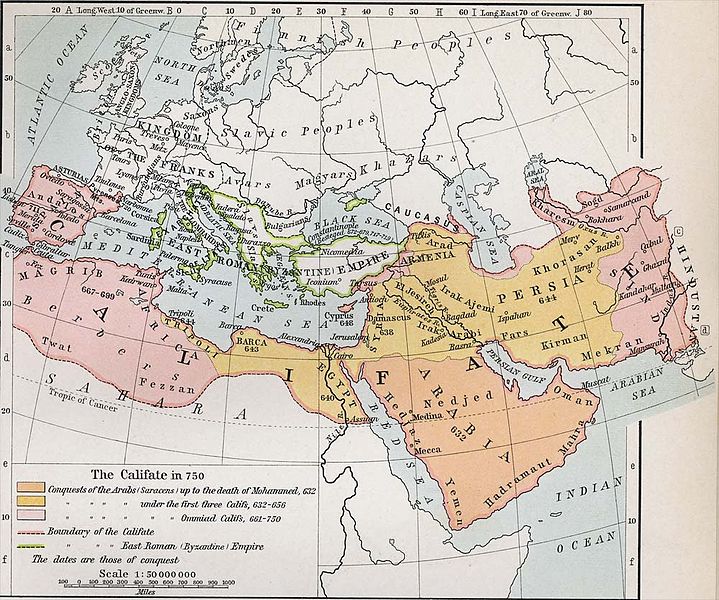Sedition of the Caliphate
by Hamdy El-Gazzar and Translated by Amani Elmawed / February 24, 2014 / No comments
A history of political assassinations and the fight for authority from Uthman Ibn Affan until the fall of Baghdad.

Map of Islamic Caliphate c. 750 AD. Photo: William R. Sheperd via Wikimedia Commons.
The Sedition of the Caliphate is the main title of a new book by the Islamic historian Mohammad Abu Rahma. The subtitle of the book is “The history of political assassinations and the fight for authority from Uthman Ibn Affan until the fall of Baghdad in the hand of the Tatars.”

- “From Egypt” attempts to draw a cultural map of Egypt and the Arab world by profiling the artistic, literary, and political issues that affect the region via on-the-ground coverage of current events, publications, and the fight for freedom of expression.

- Hamdy El-Gazzar is an Egyptian writer and one of the 39 young Arab writers included in the Beirut 39 Project. His first novel, Sihr Aswad (Dar Merit, 2005) won the prestigious Sawaris Award, and was subsequently translated by Humphrey Davies (Black Magic, AUC Press, 2007). His second novel, Ladhdhat Sirriyya (Secret Pleasures) was published by Dar al-Dar in 2008. He is currently working on a third novel.
This book was issued by Dar Borsat Al-Kutub and was surrounded by the events following June 30, including the demise of the pretending-to-be Mulsim groups in Egypt, who gave the impression that Islam is terrorism; the people who still see the concept of the Caliphate as the goal of their existence and the object of their ambition, which is, simply, to be in charge. But did the “Caliphate” really exist as a political and religious regime for transferring authority through Islamic history?
To answer this fundamental question, Mohammad Abu Rahma’s book chronicles a long and important historic period of more than 600 years. The Islamic Caliphate, which was completely resolved, became debatable after the death of the Prophet Muhammad, and continued to be so until the end of the Caliphate Era, when it was resolved again by Muawiyah Ibn Abi Sufyan, who became a “king.” Importantly enough, he willed this position to his son Yazid, so even if Muawiyah alleged himself to be the Prophet Mohammad’s successor, the reality is that he was just a king. Proof of this is that Yazid wasn’t a successor to the Prophet, but a successor to Muawiyah, who took his pledge of allegiance and imposed it with force.
This means the loss of any sacred or religious trait in any ruler since Muawiyah!
Rahma’s book also exposes the political fight for authority following the death of the Prophet, charts the history of the Umayyad and Abbasid states, tracks the motives and circumstances behind “political assassinations,” and addresses a historic period that started in Uthman Ibn Affan state in 24 AH (644 AD), and ended with the fall of Baghdad, the capital of the Abbasid state, at the hands of the Tatars in 656 AH (1258 AD). In his book, Rahma starts the chronicle of political assassinations with the death of the third Caliph, Uthman Ibn Affan. From his perspective, Affan’s death was a critical event that directly affected the whole of Muslim history. This section of the book ends with a discussion of political assassinations in Egypt in the Era of the Mamluk Sultan Al-Zahir Baibars.
Ultimately, the book is an interesting journey in historical narrative that depicts the heights of violence and ugliness that humans can reach when consumed with an ultimate goal of absolute authority, as they no doubt step over the dead who used to be their competitors!




